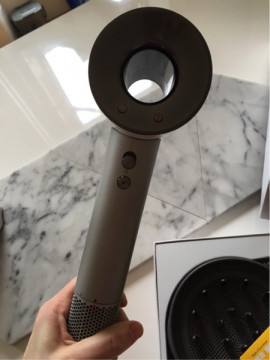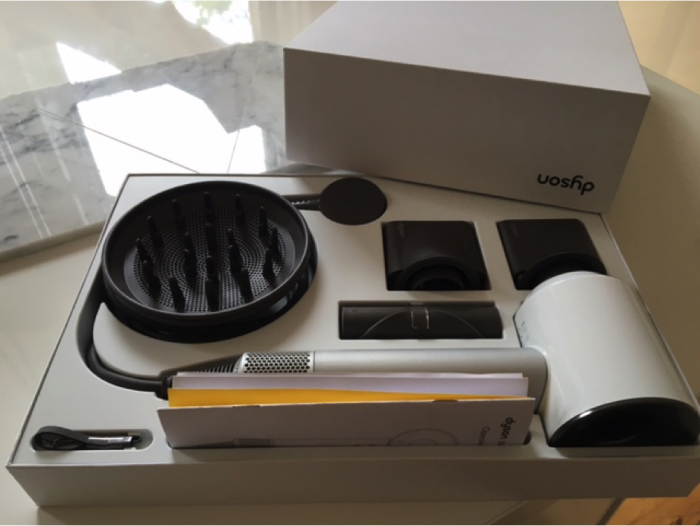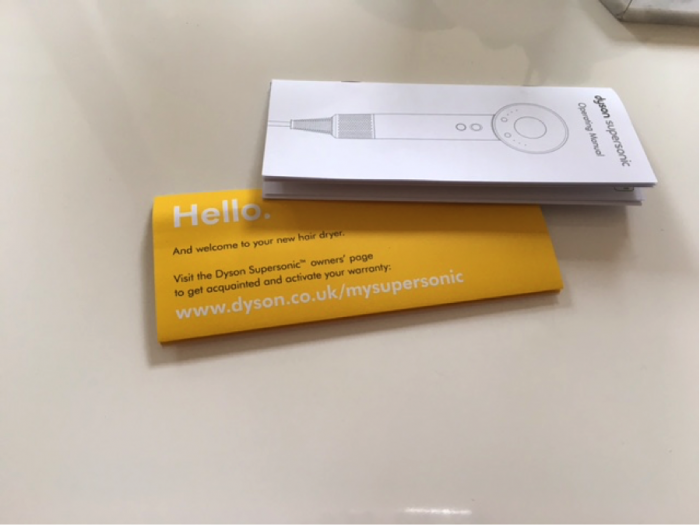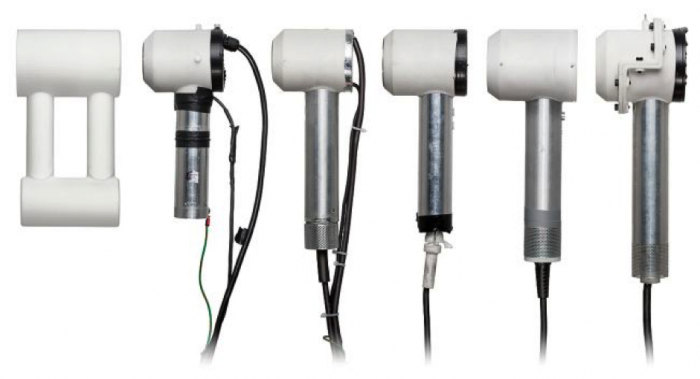£300 for a hairdryer: customer experience pays-off
A customer experience mindset reaps rewards
Employing a customer experience mindset across your organisation can open up exciting opportunities, and help create unique products.
Companies like Dyson invest in understanding the end-to-end customer experience, so they can identify unmet needs – things that customers want, but may not yet know that they want. User research is key to this understanding, but it needs to be planned from the outset: it isn’t just something that can be added on at the end of a project to tick a box.
User research involves looking at the bigger picture across a product or organisation, and every customer touch point. By understanding your customers’ existing behaviours, and carefully thinking through their journey of buying and using a product or service, you can begin to build up a picture of where real opportunities lie. This knowledge equips you to differentiate your products and services from those of your competitors.
User research methodologies
We employ a range of user research methodologies at System Concepts to help our clients identify unmet needs and opportunities. These include:
- interactive workshops
- user needs research
- persona development
- prototyping
- competitor reviews
- concept testing.
We often find that clients are surprised by the insights they gain from user research. It can highlight significant missed opportunities to further engage customers, and issues that you had no idea existed, as well as generate new ideas. It can also deliver confidence, validating your understanding of your customers and the experience they are having.
A case in point – why I splashed out on the Dyson Supersonic hairdryer
Let me start by saying I didn’t even know I needed a new hairdryer. I already had a perfectly functional, high quality and relatively new one in my drawer. Though being a big Dyson fanboy, or fangirl, I was curious when the new Dyson Supersonic hairdrying ‘miracle’ was released. Usually I’m not too excited about buying new household appliances, but I do appreciate the innovative engineering and stylish design behind Dyson’s products.
Now, £300 for a hairdryer is not something that I would usually be willing to spend. Having not been so kind to my hair over the years however, and with all its promises of minimising damage, I thought I’d take the plunge. I think I was sold by all the clever marketing around its heat control and air multiplier technology. Perhaps I was also influenced by media claims that Dyson put over £50 million – and four years of research – into the development of the product. To say that I was expecting big things from it is an understatement.
‘Out of the box’ experience
Excitedly opening up the box, I was almost waiting for a hairdresser to step out and begin drying my hair for me. The packaging has that ‘place for everything and everything in its place’ appeal.
What you get is a very sleek equipment set, including the hairdryer, three different nozzle types (smoothing, styling and diffuser) and a heat mat. It’s impressive to look at and exudes the expected brand quality.

The instructions are jargon free, and the tone of voice is very casual, almost tongue-in-cheek: “Hello. And Welcome to your new hair dryer”. The instructions made me smile and feel like Dyson cared about giving customers a good introductory experience.
The hairdryer has three power and three heat settings (high, medium and low), reducing the fear that each time you’re drying your hair you’re damaging it. There is a ‘cold shot’ button and a removable cage filter to allow you to clean the device easily. The nozzles are magnetic and can be quickly popped on and pulled off. There’s something strangely fun about it.
So what is the actual experience of using the hairdryer? Rather than taking 20 minutes to dry my hair, with some damp areas remaining, I can dry my hair fully in 10 minutes, and I don’t need to run to the hair straighteners to stop looking like my 15 year old frizzy haired self. Whether it’s causing less damage to my hair, I can’t be sure. I hope so.
The feel of the dryer is lighter without the standard heavy motor. It’s nice to hold and I don’t feel quite the same fatigue after 5 minutes of using it. It isn’t incredibly light, but definitely not as heavy as standard hairdryers I’ve used before. Overall, its design is sleek, it’s quieter than other hairdryers I’ve used, it has powerful airflow, and there is no burning smell.
Relationship between the product and the user
What’s interesting is that after using it now for around 3 months, I still keep it in its original box. I don’t know if it’s the stylish packaging where everything feels compartmentalised, the price tag, or my perception that it is a high quality product, but I take a little more care of preserving it than I would with other appliances.
Whether or not it’s worth the expensive price tag is a matter of opinion: in mine, it is. It saves me precious time in the mornings and most of all, I have a little bit of hope that I’m doing less damage to my poor hair in the process. Overall, it’s a good piece of equipment that I would recommend if you’re feeling flush.
What can we learn from all this when designing digital products and services?
This product shows how an organisation’s customer experience mindset, pro-active approach to product development and user research, can pay off.
In Dyson’s case, we’re talking very pro-active: the R&D process took 4 years and involved 600 prototypes, £50 million in research and development, 103 engineers and over 1,010 miles of real human hair.
I’m not suggesting that you spend £50 million in research and development or create 600 prototypes, but the principal of working hard to understanding your users’ needs and following an iterative development process, remains the same.
Through their research Dyson identified a market need, and placed users’ at the centre of the development process. They carefully thought through each customer touchpoint, from the packaging and instructions to the actual product usage experience. Clever marketing also serves to draw users in. The out of the box experience appears to have been as important to them as the product itself. The lighter product and strangely fun interactions with putting the nozzles on and off make it enjoyable to use. After purchasing, customers then have the reassurance of a 2 year warranty.
In their approach, Dyson have focused not only on the product, but also the end-to-end experience.
Some of System Concepts’ recent customer experience projects
We have worked with some of the UK’s leading financial services providers, helping them map the end-to-end experience of opening a new current account, from the staff as well as the customer perspective. This involved understanding customer needs as they entered a bank branch, the clarity of staff scripts, and the impact of offline communications such as brochures and telephone interactions.
Our UX consultants have also helped one of the world’s leading technology providers. Our research delivered expert insights on how users want to access healthcare information, their existing behaviours, the technologies they use, and how access to personal healthcare information impacts the experience for both end users and healthcare professionals.
This research provided inspiration in the initial stages of concept development, and an understanding of how users wanted to use healthcare information in real life contexts, driving the creation of a prototype that brought these ideas to life.
Conclusion: thinking through the end-to-end customer experience
It’s important to remember that your customers’ journey begins before they have even interacted with your product, and continues long after use or purchase. By employing a customer experience mindset and a range of user research techniques, we can help you to understand:
- Who your customers really are – their existing behaviours, likes, needs, pain points and a typical day in their lives
- Their motivations to use your product or visit your website in the first place, and why they chose you over competition
- Their first impressions of using your product
- How they use your product in real life, and how this matches your understanding of how it is being used
- Why they do or don’t return to use your product, and their ongoing relationship with your brand
- Whether your branding and other communications such as emails are consistent with customers’ online experiences
- How well your staff interactions with customers are working, and where there is need for improvement
- What competitors are doing, and how you can further differentiate your offering.

Discuss your specific user research requirements with us


